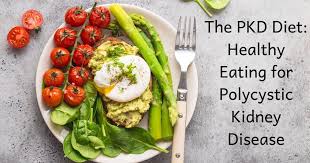Polycystic Kidney Disease (PKD) is a genetic disorder characterized by the growth of fluid-filled cysts in the kidneys, potentially leading to kidney failure. While there is no cure, a well-structured diet can help manage symptoms and slow disease progression. An effective diet plan for Polycystic Kidney Disease and highlights the role of herbal treatments in supporting kidney health.
What is Polycystic Kidney Disease?
Polycystic Kidney Disease (PKD) is a genetic disorder characterized by the growth of numerous cysts in the kidneys. These fluid-filled sacs can enlarge the kidneys and impair their function over time, potentially leading to kidney failure. PKD is one of the most common inherited kidney disorders, affecting millions of people worldwide.
Types of Polycystic Kidney Disease
There are two main types of PKD:
- Autosomal Dominant Polycystic Kidney Disease (ADPKD): This is the most common form of PKD and typically manifests in adulthood. A person needs only one copy of the defective gene from either parent to inherit the disease.
- Autosomal Recessive Polycystic Kidney Disease (ARPKD): A rarer and more severe form, ARPKD usually appears in infancy or early childhood. Both parents must carry the defective gene for a child to develop the condition.
Causes of Polycystic Kidney Disease
PKD is caused by genetic mutations. In ADPKD, mutations in the PKD1 or PKD2 genes lead to cyst development, while ARPKD is linked to mutations in the PKHD1 gene. These mutations disrupt the normal structure and function of kidney cells.
Symptoms of Polycystic Kidney Disease
The symptoms of PKD can vary depending on the type and severity of the disease. Common signs include:
- High blood pressure
- Back or side pain
- Blood in the urine (hematuria)
- Frequent kidney infections
- Enlarged abdomen due to kidney swelling
In severe cases, PKD can also cause complications such as kidney failure, cysts in other organs (especially the liver), and problems with heart valves.
Understanding the Importance of Diet in Polycystic Kidney Disease
Diet plays a crucial role in managing PKD by reducing kidney workload, controlling blood pressure, and minimizing the risk of complications like heart disease and diabetes. A practical diet plan focuses on balancing essential nutrients while avoiding harmful substances.
Key Components of a Diet Plan for Polycystic Kidney Disease
- Monitor Protein Intake:
- Limit high-protein foods like red meat to reduce kidney strain.
- Opt for plant-based proteins such as beans, lentils, and tofu.
- Reduce Sodium Consumption:
- Avoid processed foods, canned goods, and salty snacks.
- Use herbs and spices instead of salt for flavor.
- Manage Potassium and Phosphorus Levels:
- Limit potassium-rich foods like bananas, oranges, and tomatoes if advised by a healthcare provider.
- Avoid high-phosphorus foods like dairy products and nuts.
- Stay Hydrated:
- Drink plenty of water unless restricted by a healthcare provider.
- Avoid sugary drinks, caffeine, and alcohol.
- Control Blood Sugar:
- Follow a balanced diet with whole grains, vegetables, and lean proteins.
- Limit sugary snacks and desserts.
The Role of Herbal Treatment for Polycystic Kidney Disease
Best Supplements for Kidney Health have gained attention for their potential supportive role in PKD management. While these remedies cannot replace medical treatment, they may complement conventional therapies:
- Dandelion Root: Known for its diuretic properties, it may help reduce fluid retention.
- Nettle Leaf: Helps support kidney function and reduce inflammation.
- Turmeric: Contains curcumin, which has anti-inflammatory and antioxidant effects.
Caution: Always consult a healthcare provider before using Herbal Treatment for Polycystic Kidney Disease to avoid interactions with prescribed medications.
Sample Meal Plan
Breakfast: Oatmeal topped with berries and a sprinkle of flaxseeds.
Lunch: Quinoa salad with mixed vegetables, olive oil, and lemon dressing.
Snack: A small apple with unsalted almond butter (if allowed).
Dinner: Grilled chicken (or tofu) with steamed broccoli and brown rice.
Hydration: Herbal teas like nettle or dandelion root (if approved by a healthcare provider).
Final Thoughts
A well-balanced diet plan for Polycystic Kidney Disease can improve quality of life and support kidney health. While dietary adjustments and herbal treatments offer potential benefits, always consult healthcare professionals for personalized advice. Managing PKD is a lifelong commitment, but with the right dietary choices, it is possible to maintain a healthier life.




